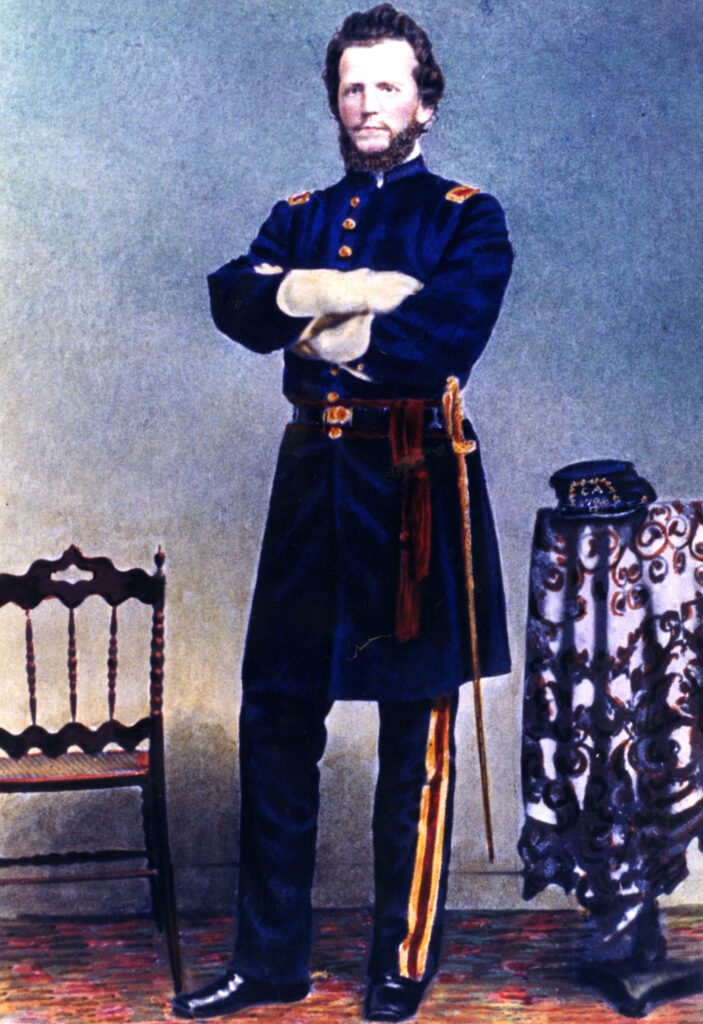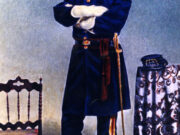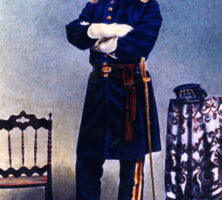Charles C. Jones Jr. was the foremost Georgia historian of the nineteenth century. Also a noted autograph and manuscript collector and an accomplished amateur archaeologist, Jones in later years became a prominent memorialist of the Lost Cause and critic of the New South.
Early Life and Career
Charles Colcock Jones Jr. was born in Savannah on October 28, 1831, into a prominent tidewater planting family. He spent much of his youth in Columbia, South Carolina, and Philadelphia, Pennsylvania, where his father, the nationally known Presbyterian minister Charles Colcock Jones, held church-related teaching and administrative positions. The younger Jones attended South Carolina College before going to the College of New Jersey (later Princeton University), where he graduated with an A.B. in 1852. He received his law degree in 1855 from Harvard University in Cambridge, Massachusetts.

Returning to Savannah in 1855, Jones began his legal career. In 1858 he married Ruth Berrien Whitehead and, after her death, married Eva Berrien Eve in 1863. A surviving daughter and son came of these marriages. In the 1850s and early 1860s Jones participated in the management of his family’s rice and cotton plantations in Liberty County, and he ran a plantation of his own in Burke County. The Jones family’s attempts to reconcile Christianity with slavery, as well as their status as paternalistic masters, have long attracted historians to their voluminous correspondence.
Political, Military, and Postwar Career
Elected mayor of Savannah in 1860, Jones governed effectively and delivered speeches in support of secession. After Georgia joined the Confederacy in 1861 he enlisted as an officer of the Chatham Artillery. Soon promoted to lieutenant colonel in the Confederate army and to the position of chief of artillery for the military district of Georgia, Jones served conspicuously during the 1864 Siege of Savannah.
Financially ruined by the war, he moved his legal practice in 1866 to New York City, where he made some progress in mending his fortunes. In 1877 he returned to practice law in Georgia, settling near Augusta at a small estate known as Montrose. Over the next sixteen years Jones won increasing fame as a historian, collector, and orator. He died of Bright’s disease at Montrose on July 19, 1893.
Publications
Ultimately, Jones published almost one hundred books, pamphlets, and articles, many of them privately printed at his own expense. A keen interest in the culture and history of the Southeastern Indian tribes led to Jones’s first published work in 1859 and eventually resulted in his acquisition of more than 20,000 prehistoric artifacts. His archaeological interests reached fullest and finest expression with Antiquities of the Southern Indians, Particularly of the Georgia Tribes (1873), which gained international renown and remains an acknowledged classic in its field.
Jones published numerous monographs relating to Georgia’s history as colony and state, prominent among them The Dead Towns of Georgia (1878). Although insufficient funds allowed publication of only two of a projected four volumes, his magisterial History of Georgia (1883) won accolades from fellow historians for its dignified style and extensive use of original sources. Negro Myths on the Georgia Coast (1888) preserved Gullah dialect versions of the African trickster tales more commonly associated with the Uncle Remus tales of Joel Chandler Harris.
Many of Jones’s later publications were printed versions of his frequent speeches to Confederate veterans’ organizations. More elaborate, however, were his Historical Sketch of the Chatham Artillery (1867) and The Siege of Savannah in December, 1864 (1874), book-length studies of considerable merit.
Library and Collections
Jones assembled at Montrose a splendid historical library boasting numerous leather-bound volumes, including many extra-illustrated copies of his own works. He also enjoyed a national reputation as a collector of autographs and manuscripts. His complete set of autographs by the signers of the Declaration of Independence, for instance, contains the holograph will of Button Gwinnett, now considered priceless. The Jones Confederate Collection, more than a dozen bound volumes, includes manuscript materials relating to all of the Confederacy’s civil and military officers, foremost among them several hundred letters from Robert E. Lee to Jefferson Davis.
More than a century after Jones’s death, several of his major works remain in print. Though an exemplary gentleman-scholar of his time, Jones has been justly criticized by modern authorities for overreliance on paraphrase, hasty composition, and inconsistent documentation. C. Vann Woodward has portrayed Jones as an anachronistic and somewhat pathetic upholder of Old South traditionalism and agrarian values against New South urbanization, commercialization, and materialism. In his own words, Jones appeared in a more positive light in The Children of Pride (1972), Robert Manson Myers’s monumental edition of the Jones family’s correspondence, where Jones’s intellectual gifts, familial devotion, and preoccupation with honor often show to advantage.






